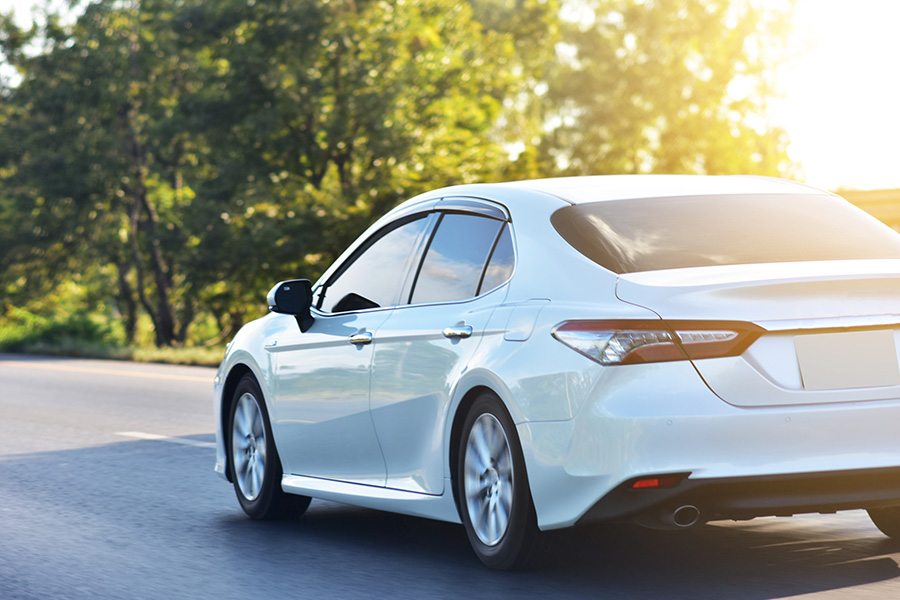Driving can be highly stressful and dangerous for you and your family. If you live in an urban area, hundreds of cars zoom past you on the highway. States with heavy rainstorms and hail can damage your vehicle and send you off the road.
Insurance companies require you to demonstrate financial responsibility in case of an accident with all the risks involved. And it’s safe to say you want to protect your children, car, and property if someone crashes into you.
Some types of insurance coverage are mandatory, while some are simply recommended or good to have. We have a breakdown of the different types of car insurance coverage in both cases.
Regardless of your credit or vehicle history, you can be eligible for coverage that protects you from future harm at an affordable cost.
Liability Coverage
Liability insurance is the one type of coverage every state law requires. However, each court varies in the coverage amount, and some insurance companies will ask for protection the state doesn’t mandate.
Relax knowing that liability coverage reimburses damage you’ve caused someone else if you created the accident. The protection will pay for property damages and medical bills of other vehicles and people. Similarly, a responsible party who crashes your car will financially support you with liability insurance.
In Arizona, the minimum property damage liability coverage is $15,000, and the minimum bodily injury liability coverage is $25,000 per person with up to $50,000 per accident.
If you are in an accident and the amount you are liable for exceeds the minimum, you are still responsible for payment. Carrying more than the minimum coverage ensures that you will not have to pay money out of pocket in this scenario.
Collision Coverage
Where your liability insurance covers other involved parties, collision insurance covers damage to your property in the case of an accident.
If another driver is at fault, then their liability insurance should cover damage to your vehicle. But in the case they don’t have proper damage coverage, your collision coverage will pay to repair or replace your car.
Collision coverage is critical to carry in cases where no other drivers are involved, and you collide with an object such as a pole or a fence. In this case, your collision coverage will pay the cost of repairs or replacing your vehicle, up to what the car is worth.
Those who drive older cars with low value may not choose to carry collision insurance. In contrast, those with high cost or valuable vehicles may decide to have increased amounts of collision coverage.
Comprehensive Coverage
You’ll be out of luck in situations where your vehicle sustains damage outside of an accident unless you have comprehensive coverage. This additional vehicle protection pays for damages to your car unrelated to collisions.
Some of these include a rock to a windshield, hail, or other weather-related damage, or falling tree limbs. It also often covers theft and vandalism incidents.
Comprehensive coverage is not required but is a bright idea to carry if you do not want to pay out of pocket for damage repair. In many cases, you will have to pay a deductible before comprehensive coverage kicks in.
But this amount is often much less than the cost of a complete repair you may need.
Medical Payments Coverage
In some states, personal injury protection coverage is available for those who wish to carry higher coverage in case of medical expenses. Arizona insurance companies may not have personal injury protection available, but others offer medical payment coverage or Medpay.
This coverage will pay excessive medical bills once liability insurance has been tapped out in car accident situations.
Additional Coverage
Most insurance companies offer additional types of coverage that are optional.
For instance, uninsured or underinsured motorist coverage covers damage to your vehicle and medical expenses if a driver hits you without or with insufficient coverage.
You can also buy rental reimbursement insurance that gets you a rental car while someone repairs your vehicle after an accident. This coverage is typically very inexpensive and worth carrying if you do not have other transportation options.
Roadside assistance is another insurance add-on that your insurance company may include automatically. With this ammenity, they send a professional technician if your car breaks down or you get a flat tire.
Lastly, gap insurance is available if you have car loan that would not be covered by your coverage if your car is totaled or stolen. It essentially assists you in paying off your remaining loan.
Finding the Right Coverage for You
Most of these insurance coverage types, excluding liability insurance, are optional. This means it’s up to you to decide which types of coverage are worth carrying for your family.
Many choose every kind of insurance that they can, some choose to carry only liability, while the majority fall somewhere in between. They pick and choose the types of coverage they need based on costs.
It’s our job to ensure you get the exact coverage you need for the best price available. And no matter what roadblocks are ahead from having teenage drivers or bad accidents, we can get you the cheapest quote.
Call us today at (480).660.3950 to discuss your insurance needs so that we can set you up with the best carrier possible.

